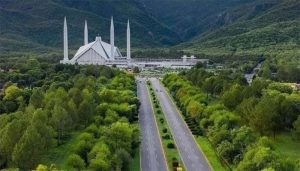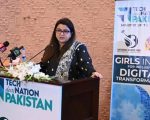Written by Dr. Athar Osama
Artificial intelligence, a rapidly advancing and fast-moving target, has seen a resurgence since November 2022, when OpenAI launched ChatGPT. This has sparked global interest from technologists, innovators, entrepreneurs, investors, and policymakers. The past year witnessed record fundraising, and new venture activity focused on AI, with global AI-focused venture investment surpassing all other sectors combined. Understanding this global AI landscape is crucial for shaping effective policies.
AI, often hailed as the ‘new electricity,’ is a foundational or platform technology with the potential to transform the entire socioeconomic landscape. Like electricity, AI is expected to enhance productivity across various sectors, leading to a multiplier economic effect on global and national economies. Recognising this transformative potential is critical and inspiring, as it paves the way for a future full of possibilities and opportunities.
In the last few years, several countries have launched AI policies and strategies or recalibrated their earlier ones to account for the massive new interest in AI. India, for instance, has an AI Strategy that was announced by NITI Ayog (the Indian Planning Commission) in 2018, which lays out that country’s aspirations in the realm of AI. Similar policies exist for the United Kingdom (2021), Canada (2021 and 2024), Singapore (2019 and 2023), Saudi Arabia (2020) and many other countries. Several of these policies define an evident and unique pathway for these countries. India, for instance, aspired to be the AI factory for the developing world (remaining 40% other than OECD and China, etc.). It aspires to be where problems in the developing world can be solved using AI. Similarly, the United Kingdom aspires to be not the global leader in AI but the leader in Europe. Taking advantage of the stringent AI regulation, the UK thinks it can attract AI talent who want to work in a relatively more relaxed regulatory environment than the EU. These visions and aspirations have a certain degree of realism and precision.
Indian Prime Minister Narendra Modi and Microsoft have collaborated to address the global AI workforce shortage, aiming to position India as the go-to source for big tech. Singapore has also launched a program to retrain the older workforce in AI and modern technologies, creating Master’s degrees and programs to match older professionals with younger individuals, allowing them to learn from each other’s skill sets.
A well-designed AI policy should align interests and create a rigorous foundation for initiatives. The Ministry of Information Technology and Telecommunication’s (MoITT) commendable attempt to consult stakeholders on an AI policy is a step in the right direction. However, the policy’s inability to execute after over a year is a matter of concern, especially given the rapid pace of AI development. A more performance-oriented policy, with clear metrics for outcomes and impacts, is needed to ensure that Pakistan’s AI initiatives are effective and impactful. Government ministries usually treat data as an instrument of control and one of the most guarded secrets, and they are very hesitant to share it even with other government departments, not to mention private entities like COE-AIs. It will be challenging even for PITB and NITBs to aggregate data from across the government and the country. This may require an especially empowered entity with the complete backing of the PM Office to do so.
There is also a mention of creating a new AI regulator. This is not a good idea for three reasons. First, AI is a developing area with much experimentation that will take a considerable time. Coming down too heavily on regulating the technology will likely be counterproductive to this innovation. Second, there is a distinct strand of opinion worldwide (including US and UK) that we should adopt “wait and see” on the regulation of technology and regulate applications only when harm becomes apparent, and that too via existing regulatory arrangements. Third, it is hard to imagine a new regulatory body in Pakistan being created from scratch and developing the capacity to regulate a fast-moving industry properly. The right way is to build the capacity of existing regulators, such as SBP, SECP, PTA, etc., while keeping regulation light and allowing experimentation.
Similarly, other proposed institutions (such as a cloud and computational facility) are probably best suited for the private rather than the public sector. The government should think very clearly and carefully before starting any new public sector institutions and only do so if no private alternative is possible. Instead of funding and creating inefficient perpetual bureaucracies, many contracts can be given against clearly defined KPIs and service levels, and value can be realised.
Fourth, the proposed policy attempts to set several targets – some of these quantified – which is the right idea. However, many targets are unrealistic and exaggerated. The policy aspires to have 1 million graduates in AI and allied skills within three years (2027), of which one year has already passed. This is several times the current capacity of CS/IT departments of the entire country’s higher education sector, and it is probably way more than the total workforce in the IT industry. To produce 1 million graduates, the policy talks about creating 10,000 trainers – a number way out of reach in any sector of the economy, not to mention a new and emerging area like AI.
The proposed policy also discusses creating an R&D culture in AI and Machine Learning. To do this, it puts forth a target of jumpstarting “at least 1,000 AI-led R&D initiatives funded in academia and the private sector via fiscal and non-fiscal support” by 2026. Again, even though one year has already passed since a very ambitious target, the idea that 1000 AI-led R&D Initiatives can (or should) be funded to address the gaps in R&D culture is entirely unsuitable and reflects plainly how ignorant and out of touch the writer of the document is of the current state of national AI research capability. Another similar number is the aspiration to file 2000 patents in AI and related technologies by 2026.
Other targets include contributing 50 new AI models to open AI platforms annually (by 2024) and helping academia to register, apply, and train 150 unique AI models annually (by 2025). These are unrealistic and exaggerated numbers and meaningless targets unless they could be justified with proper reasons and rationale for why we should do this in the first place.
Finally, most of the goals and targets identified in the document lack evidence or performance orientation. Most “targets” are input measures achieved once money is disbursed and spent or straightforward “outputs,” i.e., things that this money can buy. There is an apparent absence of “outcome” and “impact” metrics that require much more planning and effort than merely spending taxpayers’ money and buying stuff from it.
There are three areas where the proposed AI policy puts a clear onus on AI to create a social impact. A lot of vague language does not identify a goal and target for the policy to be held accountable. In health services, for example, the policy talks about AI helping analyse clinical data, support primary physicians, enable diagnosis, and make it easier for patients to self-manage. Education and learning talks about personalised learning and AI-enabled adaptive assessment. In agriculture, it talks about predictive analytics for the agricultural supply chain, weather prediction, soil monitoring, etc. None of these are specific enough for the policy to be held to account.
A bold, ambitious, and performance-oriented policy could try to ensure that every Pakistani has access to AI-enabled diagnostics in 10 years. Hence, the shortage of specialist radiologists, pathologists, or oncologists in semi-urban and rural areas has become a thing of the past. It could also make literacy available to everyone using a device and an AI-enabled tutor in 10 years, thus making out-of-school children a thing of the past. It could also improve agricultural productivity and reduce waste by 25%. Such targets could then become drivers of changes that the policy seeks to bring about and would mobilise all involved to demonstrate the impact of AI on the country and society at large.
The policy has an exciting way of signalling a particular intent, guiding action in a specific way or direction, and focusing the energies of a wide array of stakeholders towards a consciously identified strategy. A poorly designed policy does the opposite and is much more wasteful and time-consuming than no policy. Not only does it not put the resources where they are most needed, but it also puts them (and the energies of all those who follow these resources) where they are not needed, thus creating senseless initiatives, projects, and institutions that do not contribute to the desired action.
Policy needs minimalist and reflect meaningful changes in the status quo or course of action, leaving the implementing ministry or agency to fill out the details. Policy must also be adaptive—particularly for such a fast-moving area as AI—and built on solid intellectual foundations and assumptions that can be questioned, tested, and revised. If possible, the crisp and minimalist policy document must accompany the more comprehensive assessment and thought piece on which it rests.
An over-specified policy that is an assortment of unrealistic and often meaningless numbers is likely to do more harm than good for Pakistan’s aspirations to establish a foothold in the Age of AI. Any effort to create a sensible AI policy will undoubtedly benefit from learning from the shortcomings of the draft AI policy of July 2023.
The author can be reached at athar.osama@gmail.com.














